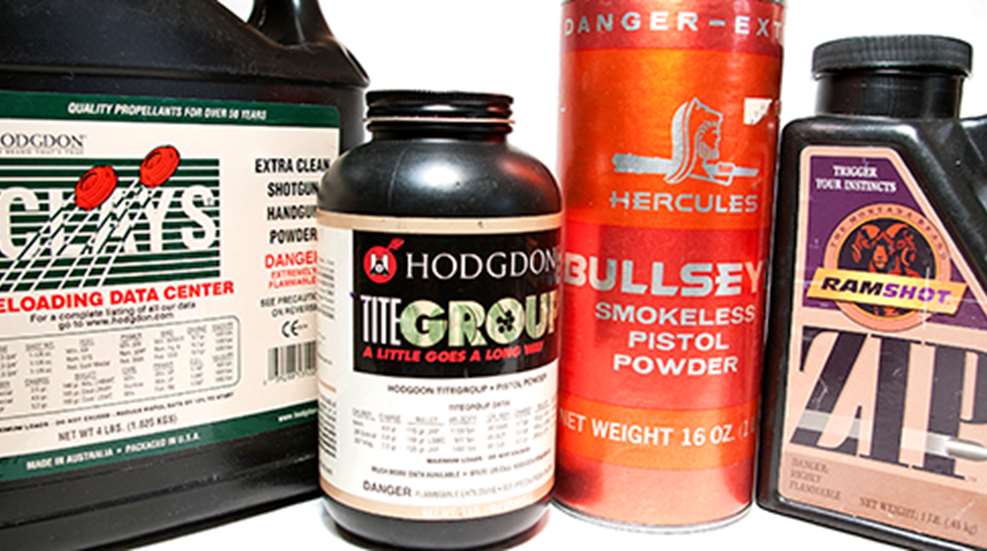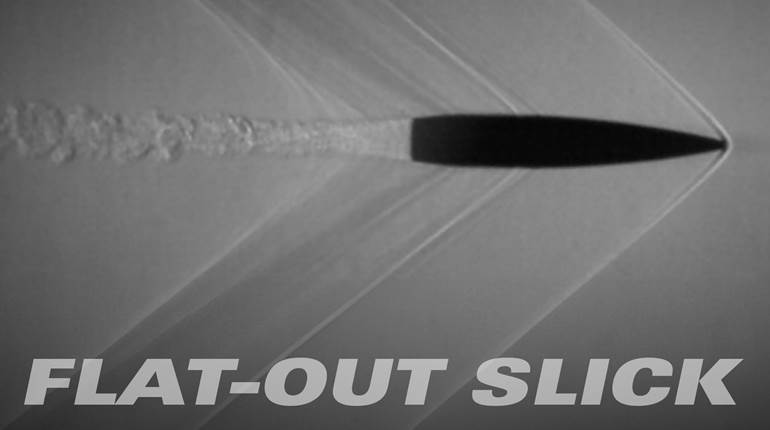
The escalating prices of components have caused me to reevaluate my approach to handloading for my semi-automatic handguns. Even small savings on propellant and bullets add up to a significant amount when shooting several thousand rounds of 9 mm Luger, .40 S&W or .45 ACP cartridges. A few dollars can be saved buying components in bulk; however, banking real money requires thinking outside the box of conventional reloading.
Appropriate Propellants
The cost of propellants can be significantly reduced by choosing a relatively fast-burning option that develops the intended bullet velocity while using less powder. For example, a 200-grain cast bullet leaving the muzzle of a .45 ACP at 800 to 850 f.p.s. makes a great practice and plinking load. According to Hodgdon Powder’s 2013 Annual Manual, 6.5 grains of AutoComp are required to reach that velocity level in the .45 ACP. However, only 4.8 grs. of TiteGroup or 4.3 grains of Clays are necessary to attain that speed. By merely switching to lighter charges of faster-burning propellants, up to one-third more rounds can be fired per pound of propellant.
Of course, it’s a good idea to shoot a sample batch to be certain such minimum-propellant charges reliably cycle a pistol’s action. The slide failed to fully seat twice in my Colt Gold Cup National Match shooting 50 .45 ACPs loaded with 200-grain bullets and 4.1 grains of Ramshot Competition with its heavy recoil spring in place. Three .40 S&W cases “stove piped” in the closing slide of a SIG Sauer P226 while shooting 40 cartridges loaded with 3.3 grains of Clays and 180-grain bullets. The SIG, though, chugged along like a steam locomotive shooting 5.1 grains of Ramshot ZIP and 155-grain bullets. The Glock 19 9 mm Luger functioned flawlessly throughout 80 rounds of reduced-volume loads.
These minimum amounts of propellant still developed uniform velocities. Autoloading handgun cases were designed for smokeless propellant, so they have less unoccupied case capacity compared to cases intended for revolvers. The .40 S&W produced velocity spreads of only 15 f.p.s. over 20 rounds, the .45 ACP rounds varied 30 f.p.s. and the 9 mm Lugers spread 19 f.p.s., and that was with propellants dispensed from a powder measure.
Bullet Bargains
There is little sense in shooting an expensive jacketed bullet at less than 1200 f.p.s. from a pistol cartridge for practice. A price check of several reloading supply websites showed .45-cal. jacketed bullets cost nearly three times more than swaged-lead or cast-lead-alloy bullets, which cost about the same. The drawback to swaged-lead bullets, though, is that they are so soft they leave behind increasing smears of lead in a pistol’s bore. And some manufacturers of semi-automatic pistols recommend against using cast bullets in their guns, regardless of hardness, so check your owner’s manual.
But ordinary lead bullets and cast lead bullets are not necessarily the same. The melt of cast bullets is a mix of antimony and tin that hardens lead. A bullet cast of the proper lead alloy and shot at the correct velocity leaves a pistol barrel free of lead. At most, a thin wash of lead remains after shooting several hundred rounds. If leading does occur at the breech, it may indicate that a cast bullet is too soft or hard. A bullet that is too soft leads because it is unable to withstand the pressure and gas erosion. A bullet that’s too hard leads because of its failure to expand and seal the bore against propellant gases that erode up the side of the bullet. If leading occurs at the muzzle, decreasing velocity and switching to a harder bullet and a better lubricant are the cure.
Mold manufacturers recommend casting with certain alloys from its molds to produce bullets of the intended weight and as-cast diameter. For instance, RCBS suggests a lead alloy of 10 percent tin, 90 percent lead for its pistol molds while SAECO recommends Taracorp’s Lawrence Magnum alloy (0.25 percent arsenic, 2 percent tin, 6 percent antimony, 91.75 percent lead) for its molds. Molds are usually cut to drop bullets slightly larger than their intended diameter to compensate for casting with a variety of alloys. Bullets are then sized to exact diameter.
Whatever alloy casters use, they should be concerned about uniform bullet weights, not an exact weight. Some cast bullet companies do not state the Brinell Hardness Number (BHN) of their bullets. Others, such as Missouri Bullet Co., do. Missouri Bullet casts bullets with a BHN of 15 to 18 for 9 mm bullets, 18 for 40-cal. bullets and 12 to 18 for .45 Auto bullets.
To provide a tight seal in the bore, the diameter of cast bullets should be at, or 0.001 inch larger than, the groove-to-groove diameter of a pistol’s bore. Most cast bullet firms produce bullets 0.001 inch larger in diameter than comparable jacketed bullets.
Be aware that seating a larger-diameter bullet may bulge a case and cause the cartridge to fail to fit in the chamber.
Shooting Results
After firing 80 .40 S&W cartridges loaded with 155- and 180-grain cast bullets, I paused to inspect the SIG Sauer P226 for signs of lead fouling. Its feed ramp was clean as a whistle. The bore was somewhat black. A brush loosened the fouling. Like a snooty butler wiping a shelf with a white-gloved finger for dust, I pushed a clean patch through the bore to check for the presence of lead. There was none. After firing 100 cast bullets through my Colt .45 ACP I also examined its bore. It was lead-free. A Glock 19’s bore was clean as a whistle after shooting 80 9 mm bullets cast from a SAECO mold. Where would the lead adhere anyway? The Glock’s hexagonal rifling does away with the sharp edges of traditional grooves and lands. I went back to shooting the pistols, confident the cast bullets were actually improving the pistols by polishing their feed ramps and bores.
That shooting is easy on the pocket, too. A box of 50 .40 S&W cartridges cost about $7 loaded with commercial cast bullets. A box of 9 mm Luger loaded with home-cast bullets costs about $3 and .45 Autos just a few cents more. Those inexpensive cartridges have reined in ammunition costs to enable me to keep shooting my pistols with a tightfisted hold.





































